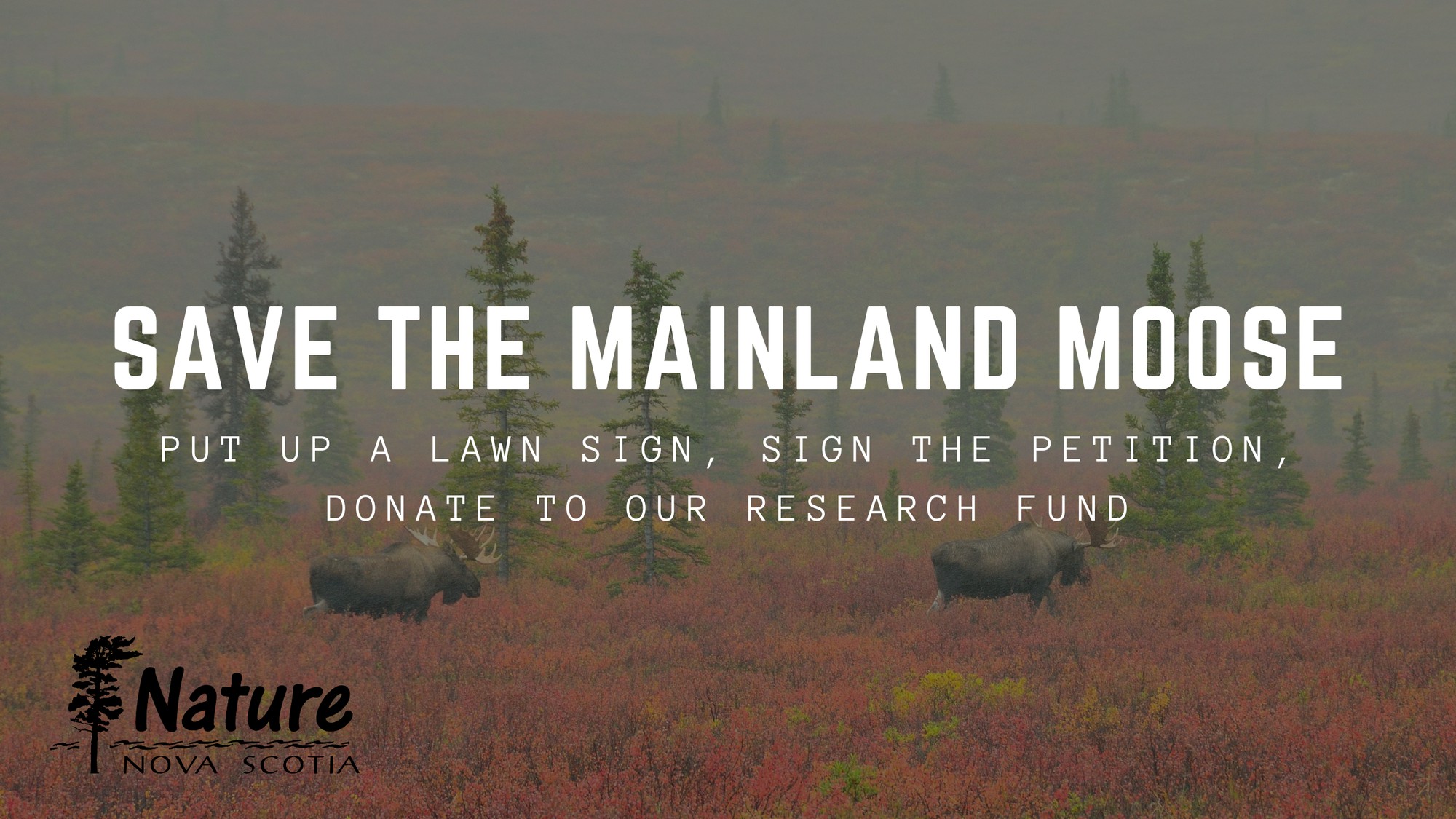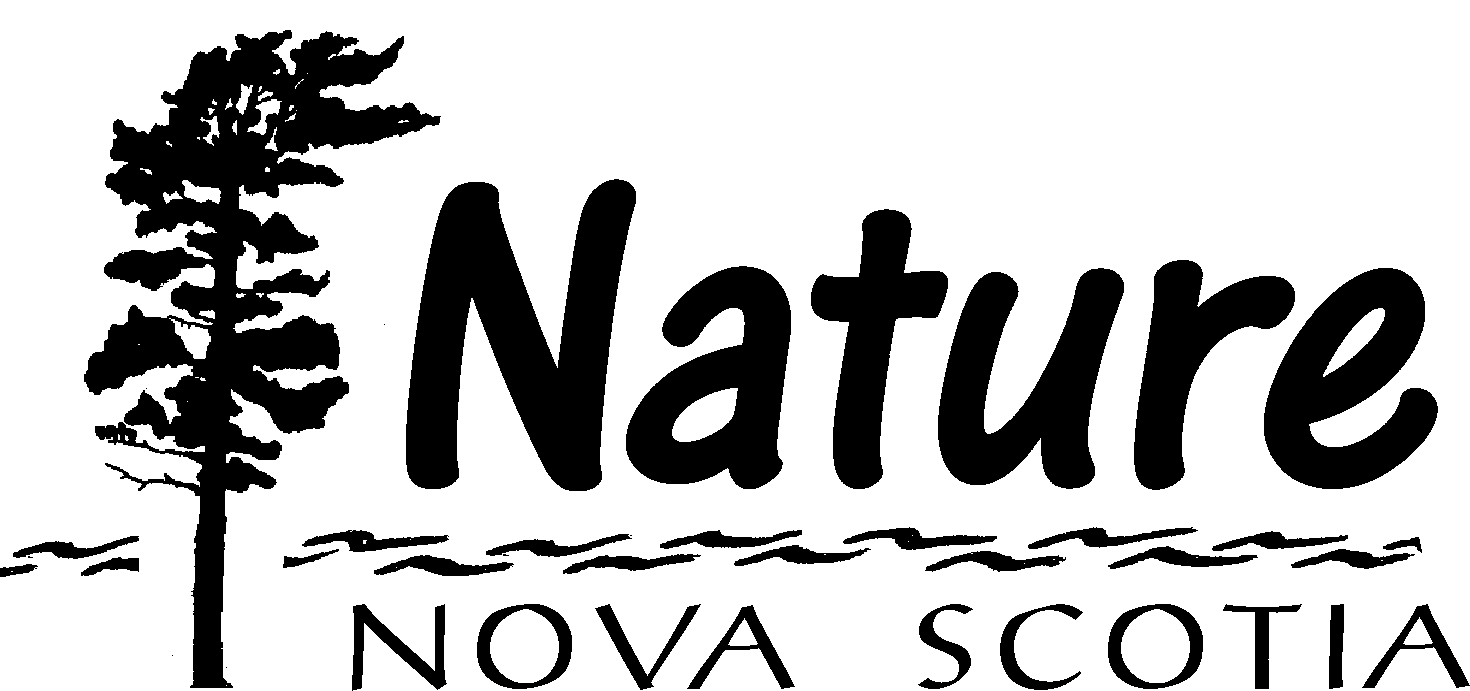Save The Mainland Moose
Registered Name: FEDERATION OF NOVA SCOTIA NATURALISTS
Business No: 891266744RR0001
This organization is designated by Canada Revenue Agency (CRA) as a registered charity. They comply with the CRA's requirements and has been issued a charitable registration number.

About 20 hours to go
The mainland moose was listed under the provincial Endangered Species Act in 2003, requiring the province to produce a Status Report, examining the state of the population, and a Recovery Plan, guiding actions for species recovery.
In the decades since listing, the province has repeatedly failed to deliver on its legal responsibilities to the disappearing mainland moose. A Status Report was created in 2003, as required by the Act, though data were limited to only a handful of uncited studies from the 1980s and 90s and sparse for southwest Nova Scotia. A Recovery Plan was released in 2007 (3 years late according to the legislation) which failed to identify Core Habitat or set a goal for recovery, stating only that existing numbers should be maintained. An Action Plan, created in 2013, offered some additional data, tools for stewardship, and opportunities for partnership, but little was accomplished by the 2018 “timeline” conclusion. The ineffective Recovery Plan, Action Plan, and lack of initiative from government in the years following prompted many criticisms from conservation, scientific, and legal organizations in the province.
The Mainland Moose is also one of the 6 Species At Risk featured in the Bancroft vs NS Lands and Forestry judicial review that supporters like you helped our nature network prepare for over 2019-2020.
At court, we alleged that the province failed to establish a Recovery Team and create a Recovery Plan within the legal deadline (which is within one year of listing for endangered species like the mainland moose), as well as to identify Core Habitat, as required by the Recovery Plan process.
We won the case and in late 2021, a year and a half later, government released an updated Recovery Plan for the Mainland Moose, complete with Core Habitat.
Immediate Action Needed on Research and Forestry Reform
This new Recovery Plan outlines, for the first time ever, a population target assuming recovery of the species and a 20 year goal for increasing numbers: 5000 moose including 500 breeding individuals, an increase of potentially ~4000 individual moose. The Plan also identifies Core Habitat, using a combination of existing population data and known and projected suitable habitat, and specifically recommends government designate Core Habitat and implementing new conservation measures within to better protect moose. It emphasized the importance of transitioning to more ecological forestry practices on public and private lands, the need for protecting habitat connectivity through the protected areas system and local stewardship action, and the potential for partnerships with eNGOs and citizens to accomplish the Plan's goals.
Seeing the need for organizations like ours to step in, and largely thanks to supporters like you, in 2022 we launched our own research project to help fill knowledge gaps for the mainland moose. We led a series of educational events over 2022-2023 sharing moose ID tips with participants and collected surveys from Nova Scotians revealing their observations and perceptions of moose conservation issues. We also launched 30 volunteer-stewarded trail cameras in moose habitat, focusing in particular on the Chebucto Peninsula. Over 2024-2026, we are building on this work by expanding our outreach to new demographics and adding 30 additional trail cameras to our moose monitoring network, focusing on rural Halifax, Guysborough, Colchester, and Cumberland areas. New events will target hunters and anglers, recognizing their crucial role in moose conservation and as knowledge holders, and young Nova Scotians, who seem to be less aware of the conservation issues facing moose, while trail camera outreach will target rural landowners stewarding appropriate habitats.
Our Findings to Date
Over 2022 to 2024, we identified gaps in public awareness of the mainland moose, particularly among younger and urban-dwelling Nova Scotians, noted heightened concerns about poaching in the Tobeatic region and, encouragingly, found an increased awareness of moose conservation issues in the Cumberland/Colchester area.
Fifty-eight percent (58%) of survey respondents had seen a moose on mainland Nova Scotia in their lifetime with many of the sightings occurring between 10 – 20 years ago. Most young Nova Scotian respondents had never seen a moose.
We also confirmed our previous suspicions that many Nova Scotians are not reporting moose or signs of moose to the provincial hotline, with 65.8% of survey respondents saying they were not aware of the provincial hotline or that they chose not to report. Lack of reporting could be due to lack of awareness or skepticism of provincial efforts to conserve the mainland moose or its habitat. These respondents do seem comfortable speaking with and reporting moose signs to Nature Nova Scotia staff, so we are hopeful that continued community engagement will break down these awareness- and trust-related barriers.
What Happens Next?
Nature Nova Scotia commends the province for finally producing a sound plan for the mainland moose and, in particular, for emphasizing the immediate need for additional research and changes to forestry practices in moose habitat. Now, Nova Scotians must hold government to this plan. Help us save the mainland moose by taking the following actions today:
- Demand the Minister of Natural Resources and Renewables designate Core Habitat for the Mainland Moose and implement regulations to protect the species, as identified and recommended by the moose Recovery Team
- Show your support for ecological forestry by putting up one of our Save Species At Risk lawn signs and demand Ecological Forestry Now by signing our petition.
- Help us fundraise for vital research by making a donation to our Species At Risk Fund. We need to improve our understanding of where moose are in the landscape, how populations are changing over time, what management techniques are most likely to result in population growth, and what kinds of conservation options Nova Scotians support.
Over the last few years, we've learned the importance of speaking up for nature. Hikers, hunters, hobby naturalists, and retired scientists can make a difference when we work together. Join us.
Donate to this campaign
Give in honour or send an ecard (optional)


